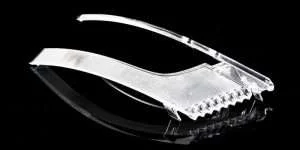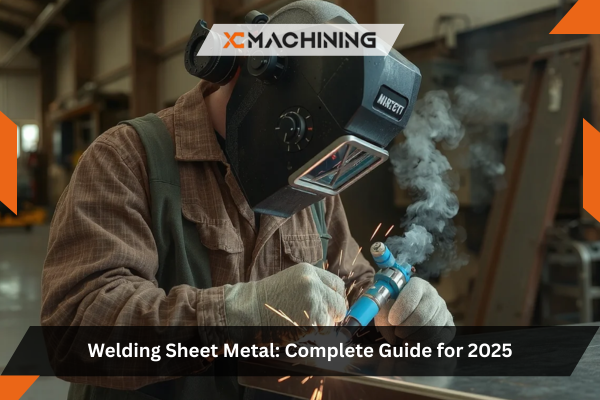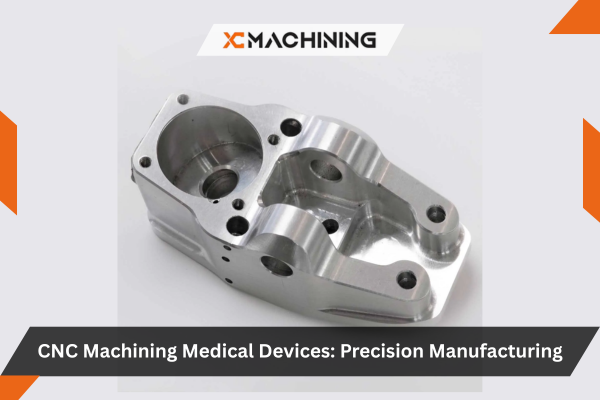Acrylic is a popular plastic used for making consumer products. It has many advantages compared to materials like glass and polycarbonate. One common method for manufacturing acrylic parts is CNC machining. Hence, it’s important to understand the acrylic manufacturing process, particularly when using CNC operation.
In this article, we will explore the process of CNC machining acrylic, highlight its benefits, and provide helpful tips for machining acrylic.

Properties of CNC Machining Acrylic
Polymethyl methacrylate (PMMA), commonly referred to as CNC machining acrylic, is a transparent thermoplastic that is frequently used as a lightweight or impact-resistant substitute for glass. Here are some essential characteristics of acrylic.
Chemical Resistance
On acrylic, you can use diluted inorganic acids, detergents, alkalis, and cleansers. Most laboratory chemicals do not harm acrylic, so you can confidently use these chemicals without worrying about damage to the material.
Stability Under Exposure to UV
CNC machining acrylic is resistant to UV rays, allowing it to withstand prolonged exposure to sunlight. This feature makes it an excellent material for outdoor applications requiring exposure to weather elements.
High Optical Clarity
Compared to glass or other polymers, acrylic is more transparent and can transmit up to 92% of visible light. It can also be dyed or tinted while maintaining its transparency.
Machinability
Similar to wood, CNC machining acrylic is easy to saw, machine, and drill. In addition to conventional machining practices, it is also easy to heat, curve, and bend to shape.
Surface Hardness
Acrylic is a robust and long-lasting thermoplastic. Its density range is between 1.17 and 1.20 g/cm³. It has excellent scratch resistance and dimensional stability compared to other transparent polymers. This dimensional stability is due to its high density, which prevents it from absorbing much water or moisture.
Impact Resistance
Acrylic resists shattering better than glass. It is a safer material for applications where breakage is a concern. Although it can shatter under extreme impact, it is less likely to do so compared to glass.

Benefits of CNC Machining for Acrylic
When working with CNC machining acrylic offers several advantages for producing intricate and precise components.
Surface Finish
CNC machining acrylic can produce incredibly smooth finishes characteristic of the material’s appearance. The accuracy of CNC toolpaths, when paired with the right spindle speeds and feed rates, greatly minimizes surface defects.
Due to this, acrylic achieves a smoothness that is frequently compared to glass, which is essential for its widespread use in optical and transparent applications. Surface roughness is precise because of the exact control provided by CNC technology,
Highly Repeatable
CNC machining’s computer-controlled precision guarantees consistent results for large production runs, with every acrylic part being made precisely the same way.
Higher Accuracy and Precision
CNC Machining Tolerance enables the production of acrylic parts with great accuracy, providing increased precision and faster cycle times. Besides, a standard CNC machining acrylic can achieve parts with an accuracy of about 0.001 to 0.005 inches, allowing for the precise machining of intricate acrylic products.

How to CNC Machine Acrylic?
CNC acrylic machining provides parts that are precisely cut, polished, and of excellent quality when done correctly. There are steps on how to CNC machining acrylic.
1. Preparing the Design
This process starts with a computer-aided design (CAD) program to prepare your design. Verify that your Acrylic part design fits within the limitations of your CNC machine.
After obtaining the CNC design, create the toolpath using Computer-Aided Manufacturing (CAM) software. The CAM software will convert Your CAD drawing into G-code, the language the CNC machine understands.
2. Set up Machining Operations
The CNC machine will now process your data and prepare the necessary actions to make the acrylic product per your design specifications. It will offer you a range of CNC machining acrylic operations, such as drilling, grinding, milling, and cutting, to process the acrylic workpiece.
3. Starting the CNC Acrylic Machining Procedures
You can begin the machining processes for the acrylic parts as soon as the materials are prepared and the machining equipment has set up its operating sequence. The acrylic part will be produced just as you have designed it using the CNC machinery, which will adhere to your design.

4. Machining Completion
The finished product will have undergone several machining processes, including drilling, turning, and milling. Due to the high repeatability factor of the CNC machining acrylic equipment, you will get the same parts for every material workpiece you work on. You also can choose to post-process the acrylic machined parts for a better appearance.
Different CNC Acrylic Machining Operations
There are several CNC acrylic operations used in making acrylic parts. These operations result in the production of high-quality acrylic parts.

CNC Acrylic Milling
CNC acrylic milling is the process of precisely machining and shaping acrylic sheets with a CNC milling machine. This technique involves removing excess material from acrylic sheets using spinning multi-point cutting tools. The workpiece is fed to the cutting tool in the same direction as its rotation.
CNC milling acrylic offers functionalities such as peripheral milling, shallow cutting, and deep cutting. The sign, headlight cover, and electronics sectors are among those that frequently use CNC acrylic milling.

CNC Turning Acrylic
This process uses a single rotating point cutting tool to remove material from a revolving acrylic workpiece. The cutting tool feeds on the workpiece in a straight line, removing material around the periphery until the desired shape is achieved. Turning CNC machining acrylic turning is capable of various machining operations, including thread cutting, boring, grooving, and facing.
CNC Acrylic Surface Finishing
CNC machining can be used to achieve the desired surface finish for acrylic. This may involve facing or fly-cutting processes. Methods like sanding, polishing, or buffing can be employed to enhance transparency, clarity, or brilliance. Chemicals, abrasives, and specialty instruments can also be utilized to achieve high degrees of transparency.

CNC Acrylic Drilling
CNC machines can drill precise holes in acrylic items using standard drill bits. It is advisable to adjust the machine’s spindle speed and feed rate to avoid cracking, chipping, or melting. Coolant should be used during the drilling process, and chip evacuation strategies like peck drilling cycles can ensure clean holes.
CNC Acrylic Engraving
Text, logos, and custom patterns can be engraved on acrylic surfaces using a CNC machine. V-groove cutters, laser engraving tools, and specialty engraving bits can be used for this purpose. The depth of the engraving and the tool’s speed depend on the desired type of engraving and level of detail.
Surface Treatment for CNC Machined Acrylic
When surface treatments are required, here are the typical finishing techniques for CNC machining acrylic.
Vapor Polishing
CNC acrylic parts can improve their surface gloss by using vapor polishing, a post-processing procedure. To get a smooth and glossy surface, the parts are subjected to a solvent vapor, like acetone, which melts the acrylic’s outer layer and permits it to reflow.
In addition to enhancing the part’s transparency and visual attractiveness, this technique can assist in erasing scratches, tool marks, and other flaws. Vapor polishing is widely used to give CNC machining acrylic components a superior, glass-like surface.

Hand Fine Polishing
A human post-processing method called hand fine polishing is applied to CNC machining acrylic pieces to improve their surface finish further. The part’s surface is manually polished using various polishing instruments, including sandpaper or a polishing compound, in addition to hand-held buffers or rotary tools.
This technique will not break surface features A high-quality, aesthetically pleasing final result is ensured by hand fine polishing, which provides exact control and personalization.
Important Considerations for Machining Acrylic Parts
Machining acrylic parts is a complex process. Here are some factors to consider during acrylic prototyping or manufacturing.
Workholding
Distributing the clamping force properly is important to prevent the acrylic from being cracked or distorted. The acrylic must be firmly clamped to the machine bed to reduce vibrations and material movement. One can use various work-holding techniques, the decision is based on the workpiece’s dimensions, shape, and level of intricacy.
Cutting Speed and Feed Rate
Acrylic is typically CNC machined at speeds of 15,000-20,000 RPM with a constant feed rate. Heat accumulation and chips sticking back onto the product can significantly degrade surface finish quality if the feed rate is too low. However, pre-cooling the acrylic feedstock before machining can help prevent heat buildup and improve chip removal. It is recommended to use oil-free coolants that won’t react with the plastic.
Tolerances for Precision Acrylic Parts
One challenge in achieving tight tolerances in precision CNC machining acrylic is its relatively high coefficient of thermal expansion compared to metals. Temperature impacts must be controlled and understood during CNC machining, along with proper heat treatment of acrylic before and after machining.
For specific features, tolerances of +/- 0.01mm or even closer are possible. It is necessary to conduct routine in-process measurements to prevent drift, either with independent CMM systems or with in-tooling probing on the CNC machine.

Tips to Get Better Results from CNC Machining Acrylic
CNC machining is an effective method for achieving precise CNC machining acrylic parts. Here are some tips to facilitate your acrylic fabrication using CNC.
Ensure Secure Material Attachment
Ensuring a secure material attachment is essential for CNC machining to remain precise and reduce vibrations. Appropriate anchoring is crucial to avoid material movement or shifting in acrylic, which can result in imprecise cuts or degraded surface finishes.
One can use various techniques for this depending on the CNC machining acrylic workpiece dimensions, form, and stiffness. These include using clamps, vices, double-sided tape, and vacuum tables.
In addition, to prevent material distortion or damage, the fastening technique should distribute the clamping force uniformly to enable unhindered machining, it’s also critical to take the tool’s accessibility and clearance around the fixation points into account.
Use the Right Cutting Tools and Bits
Using the proper CNC cutting tools or bits is essential for achieving the intended results when CNC machining acrylic. Carbide end mills with precise flute geometry and sharp edges are strongly advised for acrylic machining. End mills with one or two flutes are frequently utilized because they effectively evacuate chips and minimize heat accumulation. Because these tools are made especially for plastics, they can cut through materials smoothly without melting or chipping.
Moreover, the acrylic sheet’s thickness and the required detail level must be considered when selecting the appropriate tool diameter. Using the right cutting tool for machined acrylic parts guarantees crisp edges, clean cuts, and a high-quality surface finish.
Set the Correct Feed Rate
One approach to guarantee precise and tidy cuts is appropriately setting the feed rate. If you don’t, your acrylic may melt while being cut. A feed rate that is too fast can overheat the acrylic, creating undue friction and thermal stress that could compromise its quality. It is advisable to start with a feed rate of approximately 75 to 300 inches per minute (IPM). To attain the intended outcomes, it is imperative to oversee the machining procedure and modify the feed rate correspondingly.
Consider RPM
Because acrylic is a thermoplastic, it can melt or chip at too-high or too-low spindle speed. To obtain a clean cut and avoid melting, it is generally advised to machine acrylic at a high spindle speed. Typically, spindle speeds range from 16,000 to 20,000 RPM.
The thickness and kind of acrylic you want to cut and the unique features of your CNC machining acrylic and tools must all be considered. To ensure an accurate and seamless machining operation, it is advisable to test various spindle speeds on waste acrylic material to find the appropriate RPM for your particular setup.
Use CNC Coolant
Machining acrylic with coolant is recommended due to its high coefficient of thermal expansion. Coolant improves surface finish and helps prevent overheating. Besides, PMMA is compatible with a variety of coolants, making it easy to select a suitable option.
Polycarbonate vs Acrylic Machining: What’re the Differences?
The debate between machining polycarbonate and CNC machining acrylic has been ongoing. You should note that these materials differ significantly in their transparency and nature of use. Let’s examine the differences between these two materials.
Machining Cost
CNC machining plastic is generally affordable, but there are several grades of plastic available in the market. However, polycarbonate often costs around 35-40% more than acrylic. Therefore, when all other factors are equal, acrylic machining tends to be less expensive. However, if improper cutting techniques are used for acrylic, resulting in waste, the CNC machining cost of acrylic may be higher.
Scratch and Crack Resistance
During CNC machining acrylic may break, although scratches are unlikely to occur. In contrast, polycarbonate is the opposite – it doesn’t shatter easily but can be easily scratched.
Applications
The particular application requirements of polycarbonate and acrylic are a key point of contention in the machining debate. Due to its great impact resistance, polycarbonate is the perfect material for applications needing strength and endurance, like protective covers or safety shields. Its machinability is good, although achieving a precise surface finish may be more difficult because of its increased toughness.
CNC machining acrylic, on the other hand, provides better optical clarity and is frequently utilized in display components and signage—applications where transparency and aesthetics are essential. It yields superior surface finishes and is not difficult to manufacture. Each material has advantages and disadvantages, and the ideal option for a particular application will be determined by considering elements like machining requirements, durability, and transparency.
Machinability
In terms of machinability, polycarbonate is generally superior to acrylic. However, it’s important to consider the specific applications. While polycarbonate is strong, stiff, durable, and heat-tolerant, it may not be suitable for all situations. Acrylic, on the other hand, is easy to work with, allowing for engraving, machining, and drilling.

Applications of CNC Acrylic Parts
CNC machining acrylic parts have a wide range of uses in many sectors. Here are some notable applications:
Lighting and Electronics
Acrylic’s transparency makes it ideal for usage in the electronics and lighting industries. It is commonly used to create lamps, light tubes, and other light-emitting products, thanks to its excellent transparency, optical qualities, light transmission, and clarity.
Automotive Industry
CNC machining acrylic is used in the automobile industry for various purposes, including custom windshields, panels, logos, and displays on the dashboard. It is also suitable for creating covers for interior automobile lights and indicator lights due to its surface hardness, ease of casting, and manufacturing.
Medical and Healthcare Industry
Acrylic polymer is utilized in the medical industry to make glove boxes, components of CT scanners, microscope parts, petri dish holders, and valves. Its low maintenance requirements and compatibility with biologics make it a favorable choice for filling cavities in teeth.
Architecture and Construction
Due to its adaptability and visual attractiveness, CNC machining acrylic parts are used extensively in the building and architectural sectors. Architectural acrylic components are frequently utilized in interior design elements, signs, lighting fixtures, and building facades. Using CNC machining, architects and designers may realize their ideas by producing complex patterns, accurate cutouts, and unique shapes.
Get CNC Acrylic Services at XC Machining
XC Machining offers one-stop CNC machining services, delivering appearance and quality that exceed expectations for your acrylic projects. Our comprehensive machining capabilities including 5-axis machining, precision turning, vapor polishing, etc, enable us to machine complex acrylic components. Whether you require prototypes or parts production, XC Machining CNC machining acrylic services are equipped to meet the diverse needs of industries such as automotive, electronics, and medical devices.
FAQs
What are the recommended settings for CNC cutting acrylic?
Generally, a feed rate of 75-300 IPM is advised for cutting acrylic. Smaller bits require lower feed rates, while larger bits work better with higher feed rates. For optimal cutting without melting, a spindle speed of at least 18,000 RPM is recommended.
What is the best bit for CNC acrylic?
A 1/4-inch solid carbide O-flute is a good choice for cutting acrylic due to its up-score, which effectively removes the chips as you cut. In general, larger bit sizes tend to remove chips more effectively than smaller ones.
Why choose acrylic for CNC optical parts?
Acrylic allows for the production of optical parts with intricate geometry and a high degree of clarity. CNC-machined acrylic components are also known for their durability, as they are 30 times stronger and twice as light as glass.





